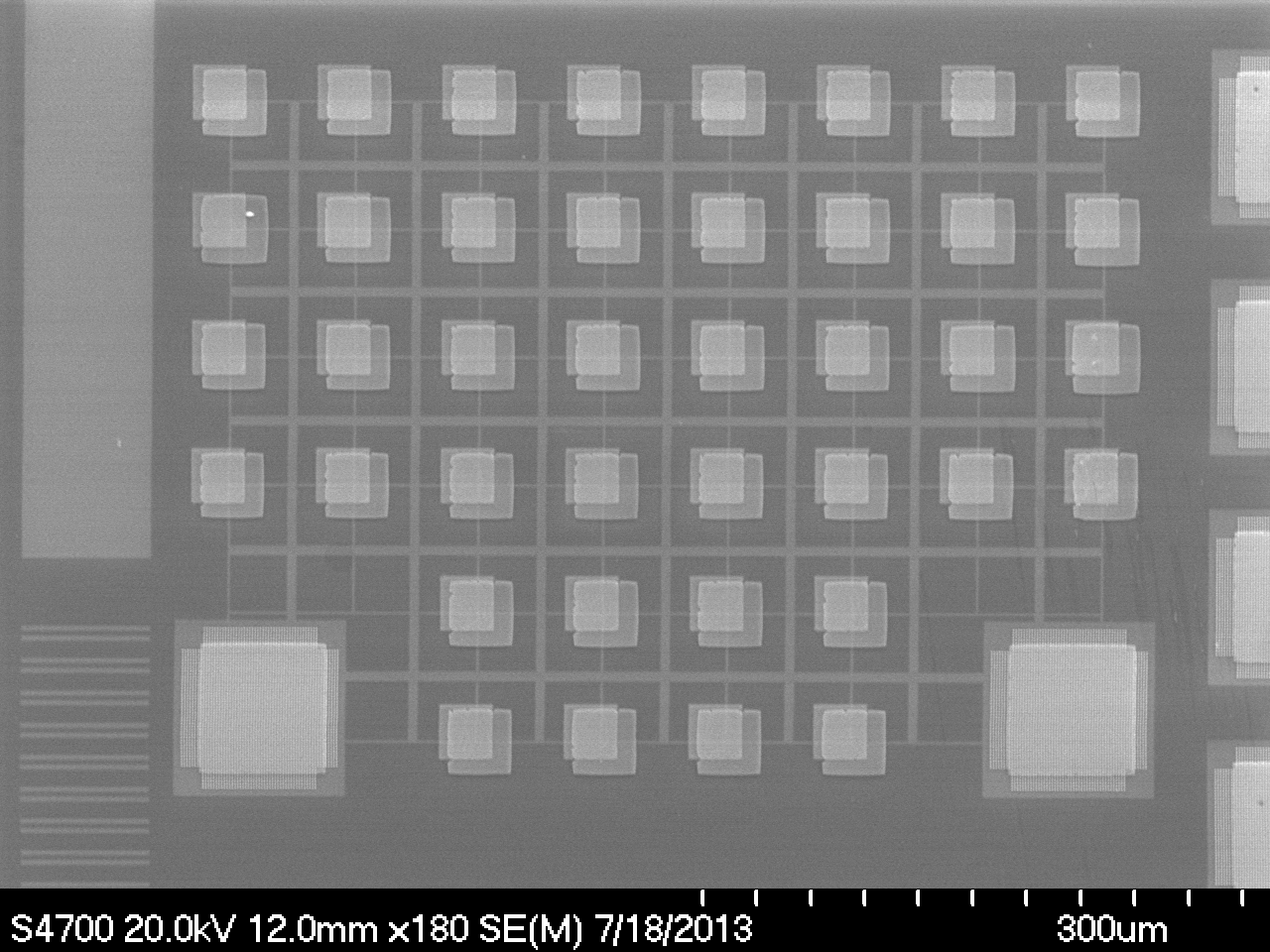Will phase-change memory replace flash memory?
September 17, 2013

An image of phase-change memory arrays (credit: AIP)
Phase-change memory, a new material built from aluminum and antimony, shows promise for next-generation data-storage devices.
Phase-change memory relies on materials that change from a disordered, amorphous structure to a crystalline structure when an electrical pulse is applied. The material has high electrical resistance in its amorphous state and low resistance in its crystalline state — corresponding to the 1 and 0 states of binary data.
Phase-change memory vs. flash memory
Phase-change memory is being actively pursued as an alternative to ubiquitous flash memory for data storage applications for three reasons, according to Xilin Zhou of the Shanghai Institute of Microsystem and Information Technology at the Chinese Academy of Sciences:
- Flash memory is limited in its storage density when devices get smaller than 20 nanometers. Phase-change memory device can be less than 10 nanometers — allowing more memory to be squeezed into tinier spaces.
- Data can be written into phase-change memories very quickly.
- Phase-change memory devices would be relatively inexpensive to produce.
However, current phase-change memory devices being developed are based on germanium, antimony, and tellurium. It’s difficult to control the phase-change memory manufacturing process with these materials. Etching and polishing of the material with chalcogens can change the material’s composition, due to the motion of the tellurium atoms,” explained Zhou.
So Zhou and his colleagues turned to a material with just two elements: aluminum and antimony. They studied the material’s phase-changing properties, finding that it’s more thermally stable than the Ge-Sb-Te compound.
The researchers also discovered that Al50Sb50, in particular, has three distinct levels of resistance — and thus the ability to store three bits of data in a single memory cell, instead of just two. This suggests that this material can be used for multilevel data storage. It also has good thermal stability, Zhou said.
The authors are affiliated with the Shanghai Institute of Microsystem and Information Technology at the Chinese Academy of Sciences, University of Chinese Academy of Sciences, and the National Laboratory of Solid State Nanostructures at Nanjing University.
Other alternates to flash memory recently proposed include silicon oxide, graphene and molybdenite, magnetless spin memory, and resistive random access memory, or RRAM (“memristors”)..